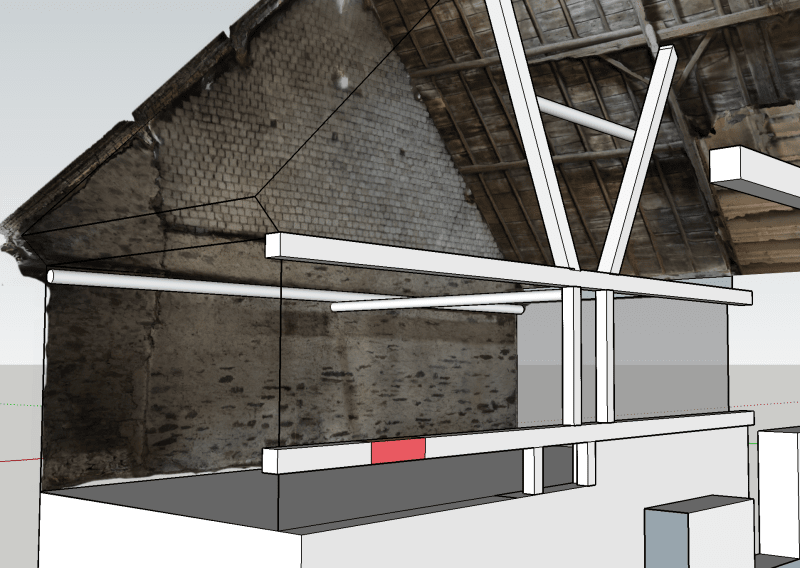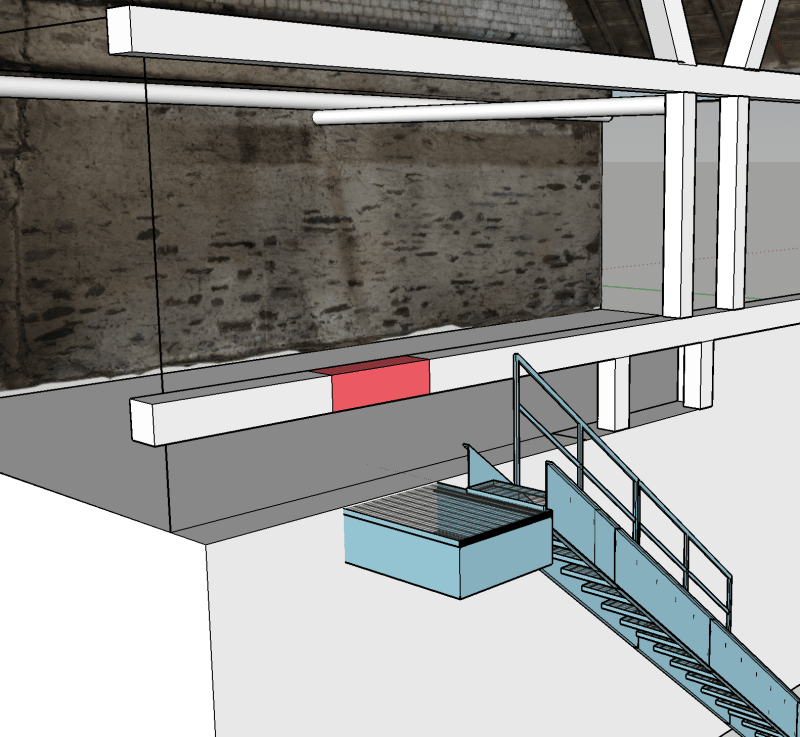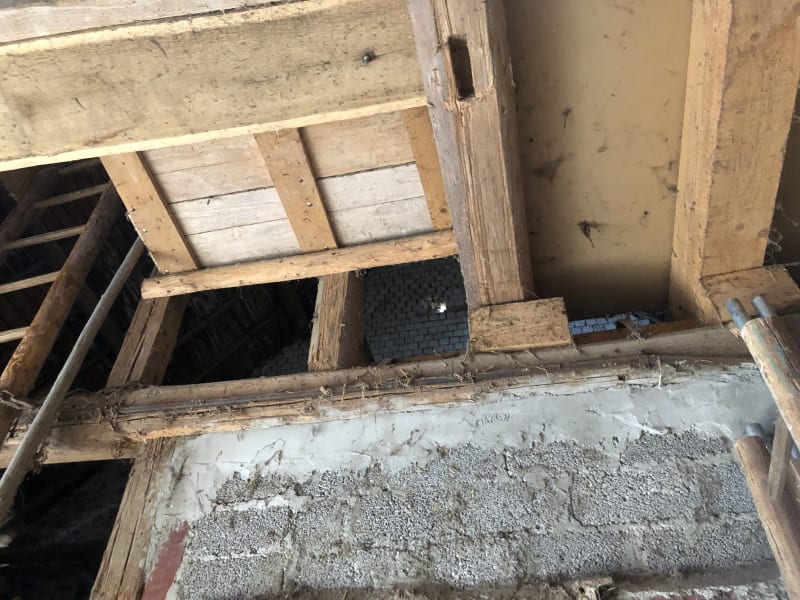Jimy B
Structural
- Jan 13, 2022
- 3
Hello all,
I have a dilemma in a barn renovation. I need to build a staircase with full (human) height access to the 2nd floor. Ideal would be to cut through the lower joist. I realise this is structurally challenging, but I am wondering if there is any kind of precedent for this kind of intervention?
I am thinking of bracing both sides of the remaining rafter to the wall below, as this has significant mass (about 70 cm thick).
Any advice, pictures, examples very much appreciated!
 [highlight #C17D11][/highlight]
[highlight #C17D11][/highlight]
I have a dilemma in a barn renovation. I need to build a staircase with full (human) height access to the 2nd floor. Ideal would be to cut through the lower joist. I realise this is structurally challenging, but I am wondering if there is any kind of precedent for this kind of intervention?
I am thinking of bracing both sides of the remaining rafter to the wall below, as this has significant mass (about 70 cm thick).
Any advice, pictures, examples very much appreciated!



